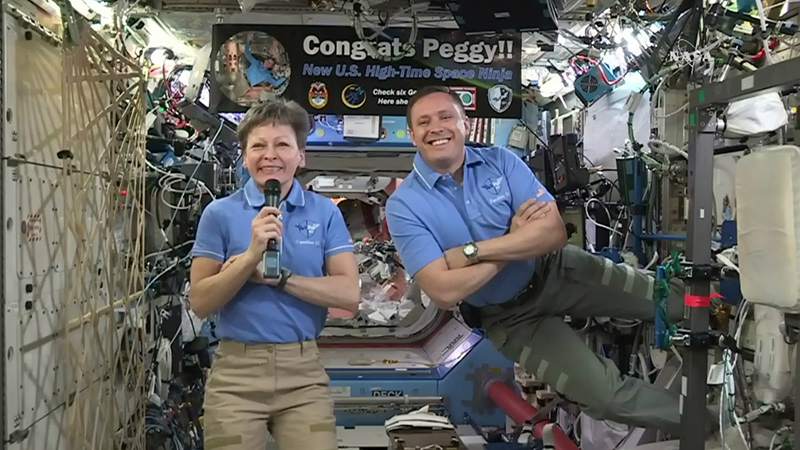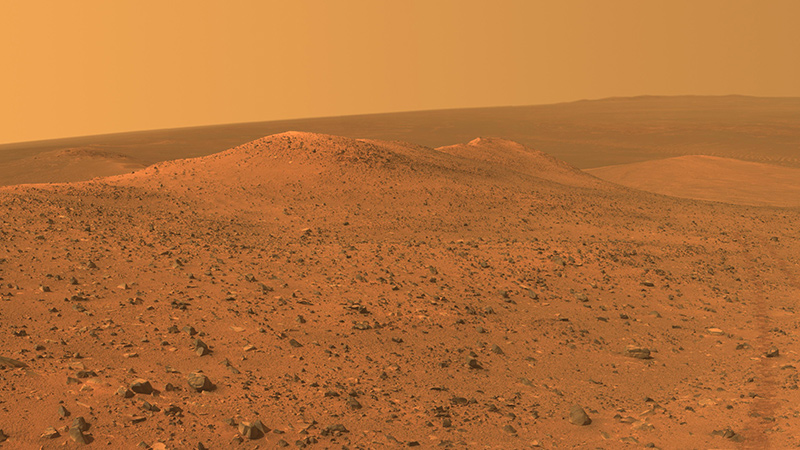Stay Up to Date
Submit your email address to receive the latest industry and Aerospace America news.
President Donald Trump’s live video chat with astronaut Peggy Whitson on Monday went viral because of their talk about recycling urine into drinking water aboard the space station, but more significant was the discussion of Mars planning.
As Whitson hovered in the space station next to fellow astronaut Jack Fischer, Trump asked her: “What do you see as a timing to send humans to Mars? Is there a schedule?”
The question hung there for a few moments because of the communications latency between the space station and the Oval Office. Whitson had just told Trump of her excitement “about the missions to Mars in the 2030s.” In March, Trump signed the NASA Transition Authorization Act of 2017, which instructs NASA to study “a Mars human space flight mission to be launched in 2033.”
Whitson gently reminded the president, “Well. I think, as your bill directed it will be approximately in the 2030s,” she said. “Unfortunately spaceflight takes a lot of time and money, so getting there will take some international cooperation to get it to be a planetwide approach in order to make it successful, just because it is a very expensive endeavor. But it is so worthwhile.”
The answer took some moments due to the latency, but Trump shot back:
“Well, I think we want to do it in my first term or at worst in my second term, so we’ll have to speed that up a little bit, OK?”
Trump’s daughter and adviser, Ivanka, seated to his left, laughed, and Trump flashed a quick smile during the lag before Whitson’s answer.
His first term will end in January 2021 and if he’s re-elected, his second term will end in January 2025. That would be an ambitious and perhaps impossible timeline.
Whitson laughed and promised: “We’ll do our best,” while Fischer gave two thumbs up.
NASA’s human exploration timeline signed off on by Trump in March leaves open the question of whether the 2033 mission would be to land on Mars or just orbit it. No plans are in the works for a lander yet and NASA’s current plans calls for orbiting the red planet. Even some who see the value in a mission to Mars continue to question the feasibility of the 2033 launch date, and they continue to debate the best strategy for reaching the planet. This topic will be the subject of a feature in Aerospace America’s May issue.
NASA veterans are typically mindful of the expectations of the political leadership. NASA’s Bill Gerstenmaier, associate administrator for human exploration and operations, in a March interview with Aerospace America spoke of the challenge of undertaking complex exploration missions on demanding political timelines. Something so bold “doesn’t occur in a single term of a congressman or a president,” he said. “For the political population there is a huge risk associated with this.”
“Well, I think we want to do it in my first term or at worst in my second term, so we’ll have to speed that up a little bit, OK?”
President Donald Trump
About Tom Risen
As our staff reporter from 2017-2018, Tom covered breaking news and wrote features. He has reported for U.S. News & World Report, Slate and Atlantic Media.
Related Posts
Stay Up to Date
Submit your email address to receive the latest industry and Aerospace America news.





